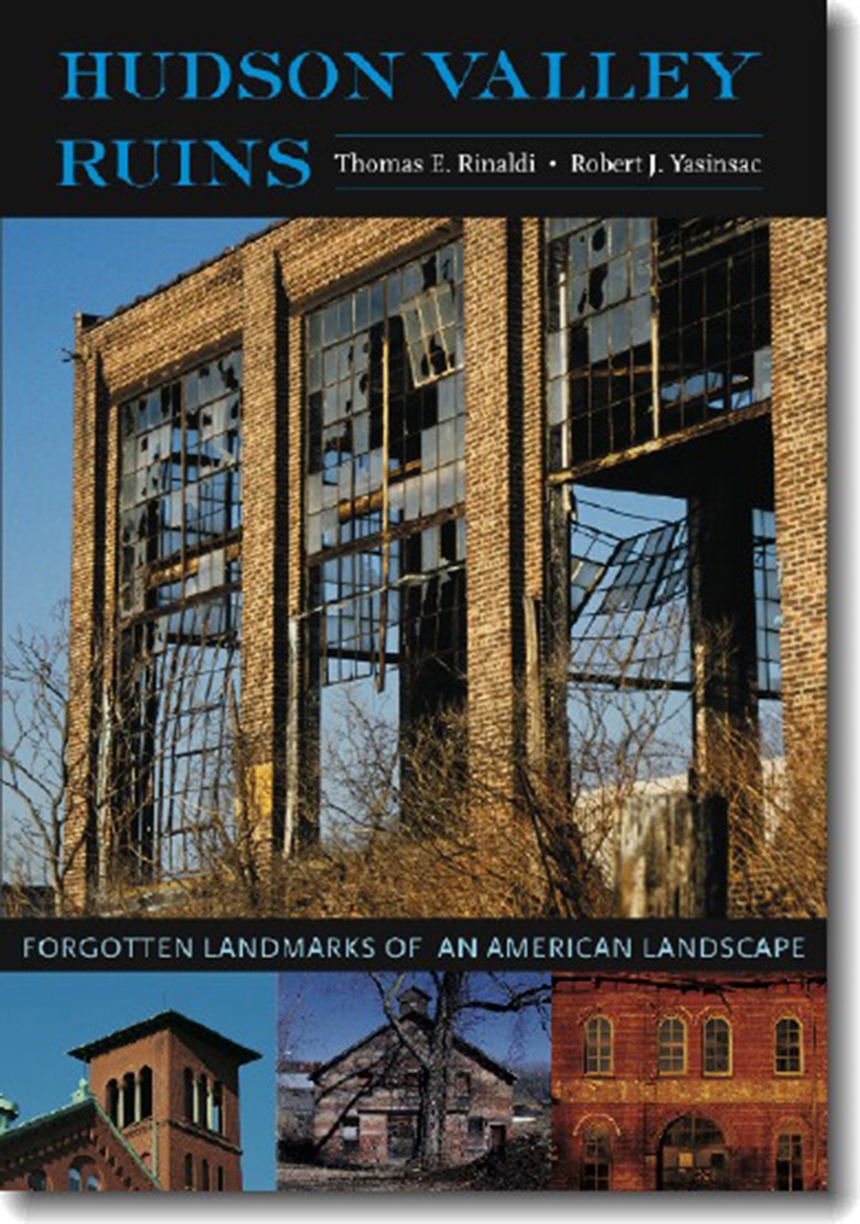9781512601312
Distributed for University Press of New England
Hudson Valley Ruins
Forgotten Landmarks of an American Landscape
Countless books have been published on the historical sites of the Hudson River Valley. But these books have focused over and over again on the best-known, best-preserved places. Every bit as valuable are dozens of other historical sites that haven’t fared as well. Many of these buildings are listed on the National Register of Historical Places, and a few are even National Historical Landmarks. But in spite of their significance, these structures have been allowed to decay, and in some cases, to disappear altogether. In an effort to raise awareness of their plight, Hudson Valley Ruins offers the reader a long-overdue glimpse at some of the region’s forgotten cultural treasures. In addition to great river estates, the book profiles sites more meaningful to everyday life in the Valley: churches and hotels, commercial and civic buildings, mills and train stations. Included are works by some of the most important names in American architectural history, such as Alexander Jackson Davis and Calvert Vaux. The book is divided into four parts that correspond to the upper, middle, maritime, and lower sections of the Hudson River Valley. Sites have been selected for their general historical and architectural significance, their relationship to important themes in the region’s history, their physical condition or “rustic” character, and their ability to demonstrate a particular threat still faced by historical buildings in the region. The Dutch Reformed Church at Newburgh tells the story of the Valley’s oldest religious group; the Luckey Platt department store in Poughkeepsie was for decades the “Leading Store of the Hudson Valley”; and the ruins of the West Point Foundry at Cold Spring are all that remain of what was once one of the river’s most important industries. Taken together, these places present a broad picture of the region’s past that is relevant to its present and future. This book was published with the generous support of Furthermore, a program of the J. M. Kaplan Fund.
Table of Contents
Foreword • Acknowledgments • THE UPPER HUDSON • Albany and Rensselaer Counties • Powell and Minnock Brick Company, Coeymans • Fort Orange Paper Company, Castleton-on-Hudson • Greene County • Alsen’s American Portland Cement Works, Smith’s Landing • Columbia County • New York Central Railroad Station, Stuyvesant • R&W Scott Ice Company, Newton Hook • Stott Woolen Mills, Stottville • Jan van Hoesen House, Claverack • Oliver Bronson House, Hudson • THE MIDDLE HUDSON • Ulster County • Overlook Mountain House, Woodstock • City Hall, Kingston • Delaware and Hudson Canal, Eddyville and West • Rosendale Natural Cement Industry, Rosendale and Vicinity • Dutchess County • Wyndclyffe, Rhinebeck • The Point, Staatsburg • Hudson River State Hospital, Poughkeepsie • Luckey Platt & Company, Poughkeepsie • Bannerman’s Island Arsenal, Pollepel Island • Orange County • Dutch Reformed Church, Newburgh • West Shore Railroad Station, Newburgh • THE MARITIME HUDSON • Maritime Ruins • THE LOWER HUDSON • Putnam County • Edward J. Cornish Estate, Cold Spring • West Point Foundry, Cold Spring • Rockland County • Dunderberg Spiral Railway, Dunderberg Mountain • Rockland Lake • Westchester County • Mount Saint Florence, Peekskill • Sing Sing State Prison, Ossining • Briarcliff Lodge, Briarcliff Manor • Graystone and Pinkstone, Tarrytown • Yonkers Power Station, Yonkers • Appendix A: Some Ruins on Public Land • Appendix B: Hudson Valley Ruins Recognized as National Historic Landmarks • Notes • Bibliography • Index
